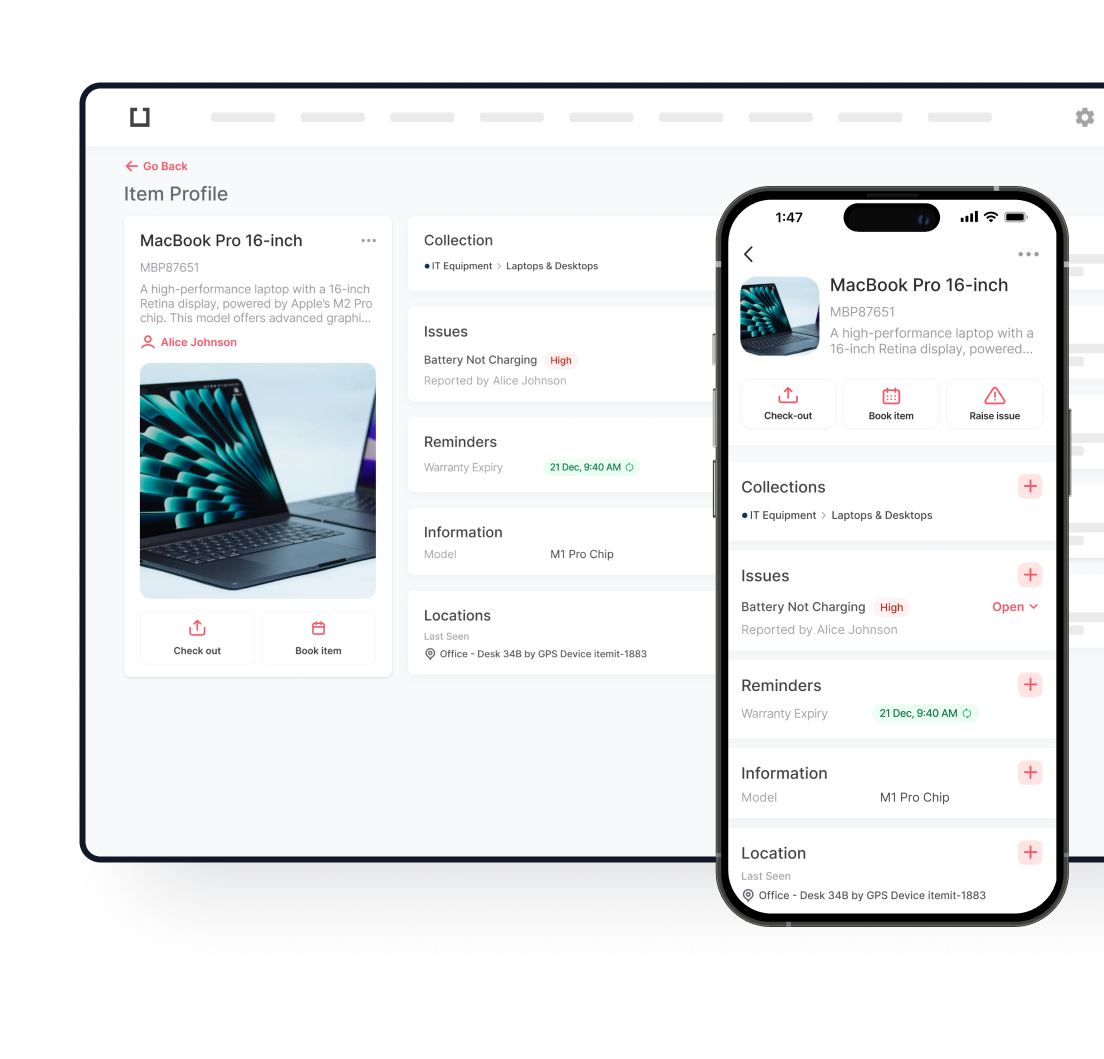
Construction Cost Management keeps projects profitable from groundbreaking to final inspection. Contractors who master financial oversight deliver projects on budget while maintaining quality standards that satisfy clients and protect margins. Effective construction project planning and systematic cost tracking prevent overruns that erode profits, damage reputations, and threaten long-term business viability.
Key Takeaways
- Construction cost control systems identify budget deviations early, allowing teams to correct course before small problems become financial disasters
- Labour and materials generally account for 70-80% of total project costs, making these categories the highest priority for monitoring
- Digital asset tracking eliminates duplicate equipment purchases and reduces rental expenses by 30-40% through better visibility and accountability
- Detailed construction project planning breaks budgets into granular categories, enabling precise tracking of where every dollar goes
- Project and cost management integration connects schedules with spending, revealing how delays translate into financial impact
- Real-time data access empowers field teams to make cost-conscious decisions without waiting for weekly reports
Breaking Down the Financial Structure
Money flows through construction projects in predictable patterns: materials, labour, equipment rentals, and subcontractor invoices. Each stream requires diligent monitoring to prevent budget leaks.
Successful financial oversight starts before the first purchase order. Estimators study architectural drawings, calculate precise quantities for every material, and price each component. They factor in site-specific conditions that affect productivity—steep terrain slows earthwork, limited site access complicates material deliveries, tight urban locations increase logistics costs.
Smart contractors build 5-10% contingencies into estimates for genuine unknowns. Unexpected soil conditions, material price volatility, design clarifications, and weather delays eat into this buffer rather than destroying profit margins. Contractors who skip contingencies often face losses when inevitable surprises emerge.
What is cost control?
It’s the systematic comparison of actual spending against planned expenditures, followed by immediate corrective action when variances appear. Without this discipline, budgets become wishful thinking rather than management tools.
Teams practicing strong construction cost control review spending continuously rather than waiting for monthly reports. Daily or weekly check-ins catch budget deviations while solutions remain manageable and affordable. Delays in identifying problems allow small issues to compound into financial disasters.
Consider a project budgeting $50,000 for concrete work. After week one, costs hit $15,000 while only $10,000 worth of work is complete. This 50% variance demands immediate investigation. Crew inefficiency requires different solutions than concrete price increases—one needs supervision improvements, the other needs supplier negotiations or material substitutions.
Variance analysis examines two critical questions: why did this happen, and what corrective action makes sense? Favourable variances (under-budget performance) deserve scrutiny, too. Under-spending sometimes indicates quality shortcuts, deferred work, or incorrect cost allocation that will surface problems later.
The Planning Framework
Construction project planning determines if cost control even becomes possible. Poor planning creates chaos where costs spiral unpredictably. Good planning establishes clear financial targets and accountability structures.
Detailed plans segment projects into manageable phases, each with individual budget allocations. This granularity reveals exactly where money goes and makes variance tracking meaningful. A hospital build might separate site work, structural, mechanical, electrical, and finishes into distinct budget categories. Within electrical, further subdivisions track rough-in, fixtures, and panels separately.
This level of detail enables accurate productivity tracking, identifies which subcontractors or work packages need attention before problems escalate, and supports better future estimating by capturing actual costs at a granular level. Projects managed as single budget line items hide problems until recovery becomes impossible.
Scheduling directly impacts financial performance. Crews waiting for materials waste billable hours while overhead costs continue. Equipment sitting idle still accumulates daily rental charges. Effective construction project planning sequences activities to minimise downtime, maximise resource efficiency, and prevent costly schedule disruptions that cascade into budget overruns.

Core Management Components
Budget Creation and Cost Estimation
Realistic budgets require quantity takeoffs for every item and labour analysis based on productivity rates. Indirect costs—permits, insurance, utilities, overhead—add up quickly and must be included.
Procurement and Material Control
Material Management in Construction balances timing and cost pressures. Order too early and you pay storage costs while tying up working capital that could fund other needs. Order too late and crews stand idle waiting for deliveries, burning labor hours without productive output.
Strategic purchasing leverages long-term supplier relationships. Contractors who consistently buy from the same vendors negotiate better pricing, secure priority allocation during shortages, and establish trust that smooths problem resolution. Volume discounts on large orders reduce per-unit costs significantly. Coordinated delivery scheduling that matches material arrivals to payment schedules from owners optimises cash flow, reducing credit line draws and interest expenses.
Labor Management
Workers represent the largest controllable expense on most construction projects. Productivity makes or breaks budgets—a framing crew completing 1,200 square feet daily costs substantially less per square foot than one finishing only 600 square feet, even at identical wage rates.
Optimal crew sizing balances efficiency against cost. Too few workers slow production and extend the schedule-related overhead—project management, insurance, equipment rentals continue accumulating charges. Too many workers create site congestion, reduce individual productivity through coordination overhead, and inflate payroll unnecessarily.
Overtime premiums destroy margins fast, adding 50% or more to regular hourly rates. Regular monitoring prevents situations requiring extended hours. When overtime becomes unavoidable, tracking which specific activities generate those premium costs improves future project estimates and reveals recurring inefficiencies that need operational fixes.
Equipment and Tool Tracking
Construction sites use thousands of assets—hand tools, power equipment, vehicles, safety gear, surveying instruments. Lost or misplaced items force teams to rent expensive replacements or purchase duplicates, directly impacting project margins. Manual tracking with spreadsheets and paper logs fails when equipment constantly moves between sites, workers borrow tools, or subcontractors use company assets.
Modern construction asset tracking solutions solve these chronic problems. QR codes or barcodes attach to each item, enabling instant mobile scanning that updates location and status in real-time.
itemit’s cloud platform provides complete visibility into every asset across all projects. Field teams scan equipment using their phones—no specialised hardware required. When a superintendent needs to locate the transit or laser level, they check the mobile app instead of making endless phone calls or walking the entire site.
Check-out systems create ironclad accountability. Workers sign out tools electronically through the app. Return scanning closes the loop and updates availability. This transparency sharply reduces losses and encourages careful equipment handling. People take better care of assets when they know the system tracks their usage patterns.
Maintenance scheduling prevents expensive emergency breakdowns that halt work. itemit sends automated reminders for regular servicing based on hours used or calendar schedules. A $200 preventive maintenance visit beats $4,000 in emergency repair costs, plus the daily equipment rental fees incurred while primary assets sit in the repair shop.
The platform works offline—critical for construction sites with unreliable connectivity. Teams scan and update equipment information without internet access. Data synchronises automatically once the connection returns, ensuring information stays current regardless of site conditions. This offline capability prevents the data gaps that plague cloud-only systems.
Bulk operations streamline workflows when mobilising or demobilising project sites. Instead of updating hundreds of tools individually, managers reassign entire equipment sets to new locations with a few taps. Quick-add features accelerate onboarding when purchasing new assets or integrating acquisitions.
Financial benefits accumulate rapidly and measurably. Projects previously spending $12,000 monthly on equipment rentals frequently cut that expenditure by $4,000-5,000 through improved utilisation and accountability—that’s 33-42% savings. Eliminated duplicate purchases save thousands more. Lower administrative overhead from automated tracking frees supervisors and coordinators for productive revenue-generating tasks instead of equipment hunts. Better asset visibility means fewer delays waiting for equipment, keeping crews productive and projects on schedule.
Connecting Schedules and Budgets
Project and cost management operate as interconnected systems. Schedule delays cost money through extended overhead and penalties. Budget constraints affect resource availability.
Integrated systems link scheduling with financial tracking. When tasks run long, the system flags budget implications automatically. This visibility enables proactive decisions rather than crisis reaction.
Digital Adoption for Financial Oversight
Digital platforms centralise financial information. Everyone accesses identical real-time data without reconciling conflicting reports. Mobile scanning and digital tagging eliminate manual logging errors while providing instant updates on equipment location and materials inventory.
Mobile technology brings office capabilities to the field. Superintendents document work, verify deliveries, and approve invoices using phones, accelerating workflows.
Construction Inventory Tracking demonstrates digital advantages. Workers scan items at receiving. Automatic reorder alerts trigger when quantities drop below thresholds. Automated reporting generates cost reports and forecasts with minimal human input.
RFP Processes and Early Cost Control
Smart contractors control costs before projects start. RFP in Construction processes with a detailed scope produce accurate bids. Well-defined requirements reduce padded estimates.
Bid evaluation looks beyond the lowest price. The cheapest proposal sometimes signals missed items or plans to recover through change orders. Value engineering during bidding identifies cost savings without compromising quality.
Monitoring and Reporting Systems
Regular reporting keeps projects financially visible. Weekly reports catch developing problems. Monthly summaries provide broader views.
Variance analysis compares actual spending to budgets. Investigating causes is critical—electrical work 12% over budget might indicate price increases, inefficient installation, or scope additions.
Earned value analysis measures productivity against spending—are we getting the work output we’re paying for? A project 40% complete and 40% spent looks fine, but if it should be 50% complete, overruns loom.

Common Financial Challenges
Scope Changes
Projects rarely proceed as designed. Formal change order management documents every modification, preventing “small” adjustments from accumulating into budget-killing surprises.
Supply Chain Problems
Lead times stretched from weeks to months recently. Multiple suppliers provide alternatives when primary sources face constraints. Early ordering locks in prices.
Communication Failures
When teams work from different information, mistakes multiply. Centralised platforms keep stakeholders aligned, preventing expensive errors.
Flawed Baseline Estimates
Underestimating labour, materials, or project difficulty creates impossible targets. No amount of construction cost control overcomes deeply unrealistic budgets. Historical data improves estimation accuracy.
Best Practices
Start with detailed construction project planning accounting for every foreseeable expense. Track everything—small unmonitored expenses compound into serious overruns. Implement asset tracking tags on equipment and tools to maintain accurate records and prevent losses. Weekly budget reviews keep teams focused. Digital tools improve accuracy and speed. Post-project reviews identify lessons for future work. Empower field leadership with real-time financial data for better daily decisions.
Sophisticated Tactics for Large Projects
Cost-loaded schedules show how spending should flow over time. Cash flow forecasting prevents liquidity problems from upfront expenses. Tiered risk reserves—2-3% for weather delays, another 3-5% for strikes or disasters—provide protection.
Measuring Financial Performance
Construction cost control success shows in gross profit margins, budget variance percentages, and schedule adherence. Delivering on-budget projects builds reputation and generates referrals. A $12,000 asset tracking system saving $40,000 annually delivers obvious ROI.
Implementation Strategies
Rolling out systematic cost management requires training to overcome resistance. Pilot programs validate new systems before company-wide deployment. Match tools to organisational scale—small firms don’t need enterprise software.
The Competitive Edge
Financial discipline separates profitable contractors from those struggling to survive. The gap between success and failure often comes down to systematic monitoring, proactive adjustments, and leveraging technology for visibility. Contractors who treat cost management as a core competency rather than an administrative burden position themselves for sustainable growth and competitive advantage.

Try itemit
Choose a better way to track
your assets.
Start your free 14-day trial now!
Frequently Asked Questions
How does construction cost management differ from basic project management?
Cost management focuses on financial oversight—budgets, spending, and profitability. Project management encompasses broader scope including quality, safety, and scheduling. The disciplines intersect constantly as schedule impacts drive budget implications.
What percentage of construction projects exceed original budgets?
Research indicates 60-75% of projects overrun initial budgets, from modest 2-3% to catastrophic 50%+ failures. Projects with robust construction cost control frameworks limit overruns to single digits through proactive monitoring.
Can modern cost management platforms integrate with accounting software?
Most platforms integrate with QuickBooks, Sage, and Xero, synchronising data and eliminating double-entry. Integration depth varies—some offer real-time sync, others scheduled exports.
How quickly do teams see ROI from digital cost management tools?
Smaller firms transitioning from spreadsheets usually see returns within 3-6 months. Larger organisations might recover costs during their first cycle. A single avoided 5% overrun on a $1 million project funds years of subscriptions.
What role do project and cost management play in competitive bidding?
Contractors with superior cost management win more work and preserve margins. Accurate historical data enables competitive pricing without sacrificing profit. On-budget delivery records attract owners burned by competitors’ overruns.
Should all construction projects use identical cost management approaches?
Different project types need tailored systems. A $50,000 renovation requires simpler tracking than a $20 million development. Core principles remain consistent, but tool sophistication and detail scale with project complexity.

Keep Learning
itemit Blog
Tips, guides, industry best practices, and news.
Optimising Construction Storage for Better Project Management
Essential construction storage methods that enhance site management, improve workflow efficiency, reduce material loss, and keep projects on schedule and budget.
Everything You Should Know About Material Management in Construction
Discover everything you need to know about material management in construction. Improve inventory control, reduce costs, and enhance project efficiency and quality.
What is RFP in Construction? Process Steps and Best Practices
Learn about the RFP process in construction, key steps involved, and best practices to create successful bids that ensure smooth project execution and efficiency.



